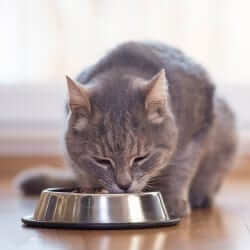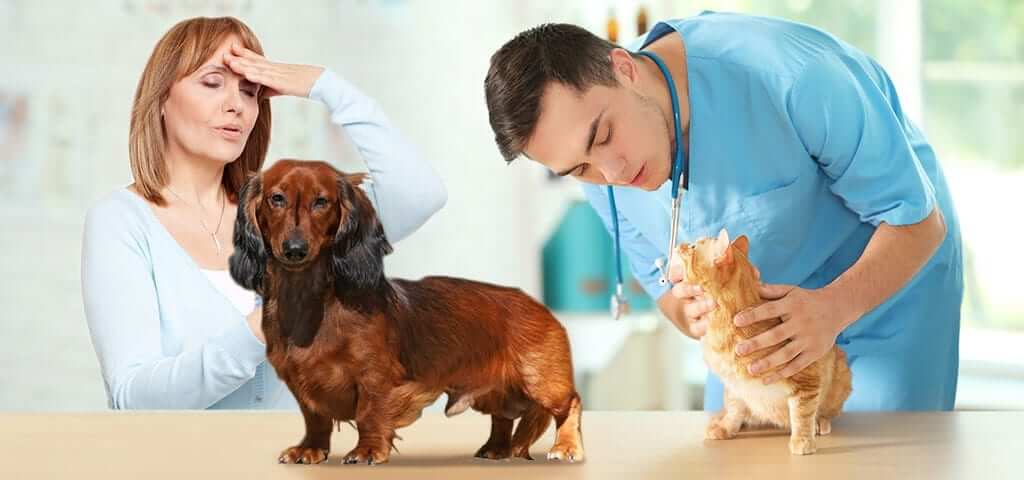Unfortunately, sometimes communication with your vet falls short. Let’s fix that.
I’ve been part of the ADW Diabetes team since 2011. In that time I have fielded thousands of emails from readers who have felt disappointment or frustration or even helplessness about their pet’s diabetic condition. And sometimes they may mention something derogatory about their family veterinarian. Most veterinarians do their best to be your hero!
I’m a practicing veterinarian, too. We vets try so hard! A few simple suggestions may help you form a more harmonious relationship with your veterinarian.
Be Your Pet’s Health Care Advocate
We must be our pet’s healthcare advocate. Just as when you get sick yourself, you must learn all you can about your condition to improve the chances of a successful outcome. You must also learn about your pet’s diabetes. After all, diabetes can be a long term condition for cats and is nearly always a long term condition for dogs. Education is key to good blood glucose regulation.
Be Organized
Communication with your veterinarian is very important. There are things you can do to establish and maintain good communications with your vet. From my perspective, as a practicing veterinarian, I love it when my diabetic pet owners keep good records. Most glucose meters come with log books for writing down glucose levels. Folks usually fill up the log book or perhaps lose the log book, then perhaps come in for an appointment with scraps of papers in an unorganized file. That wastes time during the consultation. Try to keep it organized!
Several years ago ADW and I made a log book including things I felt pertinent. Or, for my clients who are more computer savvy, I love it when my clients email their pet’s blood glucose curve numbers to me at my clinic. It’s so easy for me or my staff to copy and paste it into the records at the clinic.
Be Kind
Please always be friendly to your vet. Yes, we understand that diabetes is an expensive and perhaps scary disease, but it isn’t our fault that your pet is diabetic. We are on the same team, and we want your pet to live a long and healthy life despite the diabetes. We make recommendations for tests to help your pet feel better.
Communicate
Communication is key to avoiding mistakes! Communication includes your family! If I have more than one person potentially giving insulin injections to a pet, I want a calendar on the fridge. I want each caretaker to mark off when the morning or evening injection was given. I’ve seen a pet get double-dosed by family members who were unaware that the pet already had the insulin dose administered. It takes a village to regulate a diabetic pet in our hectic lives. Keep track with a calendar and communicate with each other.
Know the Plan
Keep communication open with your vet about the plan. When you leave an appointment ask when you should come back. Know that even when you think your pet is under perfect blood glucose control you’ll need to run blood glucose curves at least every couple months in case we need to tweak the dose. You’ll want a quarterly check-up and both a blood profile and urinalysis/culture at least twice yearly. We want you to keep track of your pet’s body weight and clinical signs and let us know if anything changes. Know the plan!
Have Realistic Expectations and Know the Big Picture
Know what may happen. Read. Educate yourself on diabetes. If you understand the big picture expectations about diabetes it may light a fire under you to run those curves and do home testing!
Expectations for dog owners:

Great blood glucose regulation will dramatically decrease the risk of diabetic cataracts for dogs. There are oral supplements available that can dramatically decrease the risk of cataracts in dogs. Speak with your vet about this to get their opinion. If cataracts do occur there is surgery to remove them, but it’s so much better to avoid them in the first place.
Expectations for cat owners:

We don’t know how much pancreatic function remains when we get a cat into diabetic remission. We need to keep the kitty slim and continue the low-carb diabetic diet to improve the likelihood of continued remission. If the kitty becomes diabetic again, we simply reinstitute the insulin injections.
Have a question or comment? Then post below! I always enjoy hearing from my readers!
NOTE: Consult your veterinarian first to make sure my recommendations fit your pets special health needs.







Thank you much appreciated. Put dog on go. So far no eye change. Also started feeding one hour after insulin. Trying to get her to lose weight as she should only be 15 lbs. her readings have been staying on an average of 355 a week. I have only been testing on her upper pad and am concerned about too much use there. She is Pomeranian and Yorkie mixed
I wrote an article on tips and tricks for getting a blood sample a few years back (link: https://www.adwdiabetes.com/articles/tips-tricks-blood-sample-pet )
I find the ear the best spot for a small doggie, but each pet varies.
Why are you waiting to feed your pet after the insulin? It’s best medically to give the meal and the insulin at the same time. Often, if a pet is food motivated they won’t even notice the injection if they are diving into the food bowl.
Remember to run a blood glucose curve a week after changing dosages.
Best,
Joi
I was told by my vet to only give my recently diagnoised dog insulin if over 250. If over 250 and under 350 give 10 units. If over 350 give 12 units. My dog is mixed breed female weighing almost 20 pounds. Also I was told to test glucose level and give insulin as needed before feeding. I have done research on the subject and am more confused than ever. I was on prescription diet food but again after much research decided to take her off the prescription diet. Then after hours of research I started feeding jinx mixed with about a teaspoon of natures recipe trays(wet food). She is very overweight so I feed her only 3/4 cup of the food. Please help very confused. I am giving food before the insulin and her glucose level was 205. Therefore I did not give insulin. Trying to understand about a curve. Only been diagnoised a month now. I am an 83 year old fairly intelligent woman but I am very confused about my vets advice. I tried to call and take to the vet but was given a vet tech even after insisting I speak with the vet. It is too expensive to look for another vet. I am on a fixed income. I never even met the vet to talk. Only a tech. Please excuse the long message
Wanda, you do sound intelligent. I’m going to email you some of my favorite diabetes articles and links for pet owners to your email address!
A sliding scale can be used for pets, particularly cats if we think they are going into remission of their type 2 diabetes. (Cats typically get type 2 diabetes.) Dogs get type 1 diabetes and don’t go into remission unless they have gestational diabetes (much like how humans can get when pregnant). So for you to skip insulin altogether doesn’t make any sense to me. I think chatting with your vet is important, so if the lines of communication aren’t open you might need another veterinarian. Communication and education are key to a well regulated diabetic pet. Try again. It would make sense that your vet choose a dosage every 12 hours, even if the blood glucose is under 250 mg/dL. Of course if the blood glucose is under 150 I can understand decreasing or skipping a dosage if a diabetic pet isn’t eating well. This needs supervision by a veterinarian who has examined your pet! Again, I’ll send you some links and articles on diabetes. Best, Joi
My vet is dead set against home testing. She is also hesitant on foods other than the prescription foods she sells there in the office. I have done so much research in the last 2 months since our min pin was diagnosed that I feel we could try the the home testing but because she is against us doing that, we are stuck with the $150 curves every week then now every 2 weeks. Stress in the office is my biggest concern for inaccurate readings so they give him something to calm him while he is there. Not sure if that will effect his numbers up or down. I like your suggestions but sometimes no matter what, a vet just will not bend to what could be the right way due to their beliefs or training. Ours will never suggest a supplement that is not something they sell there nor will she budge on food changes unless I really insist. Frustrating as we have to get the Vetsulin from her office as she will not authorize mail order. Might be time for a change….
Well, darn it! That is all very unfortunate. I’ve been practicing for 30 years and that attitude of not wanting folks to do home testing is very old school.
You are correct. A min pin in a vet clinic is typically quite stressed. No sedative is going to make your sweetie relax enough for accuracy. I have an article that I wrote for this website years ago called “tips and tricks” for getting a blood glucose sample. My little sock trick is quite helpful—a sock filled with uncooked rice or uncooked beans, warmed in the microwave, held against the ear or wherever you plan to collect blood for a few seconds to cause vasodilation from the warmth—really helps folks with smaller pets. Find and read that article.
My favorite meter is the Alplhatrak meter. It requires a very tiny droplet of blood for a reading. You can run the blood glucose curve—every 2 hours from one injection to the next injection of insulin. If it goes below 150 mg/dL then check hourly so we don’t miss where the nadir is. (Nadir = where the blood glucose curve bottoms out.) Doing the blood glucose curve at home is obviously going to save you a lot of money.
Do please put your sweetie on ocu glo to help prevent diabetic cataracts. It can be found online without a doctor’s prescription.
If your vet truly resists home testing, you may need to find another veterinarian in your town.
Best, Joi
Struggling w a recent dog diabetes diagnosis and feel like our vet isn’t listening or helpful. She has lost sight in one eye due to cataracts and vet says it isn’t an issue. I am reading it’s painful and surgery an option, she is 12 years old.
I’m so sorry your dog is experiencing this.
I recommend all diabetic dogs go on Ocu-Glo and alpha lipoic acid to help reduce the odds and progression of diabetic cataracts. It is the alpha lipoic acid that is the ingredient in Ocu-Glo that most helps prevent diabetic cataracts, but Ocu-Glo has other beneficial ingredients for the eye health of a diabetic dog. Ocu-Glo can be purchased online or by your local ophthalmologist. Ideally, folks with a diabetic dog would use Ocu-Glo or a alpha lipoic acid AND MAINTAIN GOOD BLOOD GLUCOSE REGULATION TO HELP PREVENT YOUR DIABETIC DOG FROM GOING BLIND FROM CATARACTS. The dosage of alpha lipoic acid I found for diabetic dogs to help decrease cataract formation in dogs is 2.5 mg/kg per day. Cataract surgery is very expensive, but is typically well tolerated by dogs. It’s best to control your pet’s blood glucose levels and use Ocu-Glo or alpha lipoic acid to prevent diabetic cataracts in dogs, but sometimes cataracts happen so quickly that owners were unaware of the diabetes until their dog has cataracts or soon after diagnosis. (Diabetic cataracts are rare in diabetic kitties.)
been reading alot and have been misguided cat seems to be worse on insulin, gave him low carb food he eats less and is happier, when taken to vet he meowed for 35 minutes always.. hes on 3 units twice a day an was on dm salvory which i found out is 13.66 carbs switched to fancy feast 7 gr carbs. never took blood trying now how do i figure out the curve and whats a regular cats blood supposed to be.
If your cat gets really stressed while going to the vet, there can be stress hyperglycemia. The best way to know is by doing home glucose testing. I wrote an article years ago on our website called tips and tricks for getting a blood sample. Put in the vet articles sea ch “tips and tricks” to find that article. Home testing will give you the true glucose levels when not stressed at home. The alpha track meter is my favorite meter as it requires so little blood for a sample and is really easy to use and is calibrated for dogs and cats.
Good job feeding canned food as it is lower in carbohydrates. Some cats willgo ito Diabetes remission simply by lowering their carbohydrates ingestion. (Most cats diagnosed with diabetes will also need insulin Initially to get over the glucose toxicity, but if they go into remission with insulin and a low carb diet can then be maintained on low carb diets without insulin.)
If you wish to read further, the 2018 AAHA DIABETES GUIDELINES are readily available on the Internet.
Education is key!
What does doing a curve mean
Dr, Sutton, did you miss this question?
Glucose 7/24/2020 155 (no insulin for 4 days)
5/1/2020 431
7/30/2019 298
Fructosamine 7/24/2020 209
He lost 11 oz. over 3 months. Now at 13# 8
Do share these numbers with your veterinarian who has the full clinical picture as he or she has examined your pet.
I am trying to learn more about when a cat is considered in remission. The term “normal range” is often used. Is that 80-120, or do you quit giving insulin at a higher number?
My cat’s morning (about 10 hour fast) level is usually around 135. If I give him 1/4 unit insulin (ProZinc) he drops below 80 so I don’t give him insulin. He went 4 days without insulin.
Yesterday he started at 154. I gave no insulin. Two hours after eating (Tiki cat chicken) he was at 145. At lunch time (my vet recommends 4 meals, I know you recommend 2, I give 2 larger w insulin check, and 2 smaller, one at 6 hours between larger and other 3 hours after dinner- before bed) he was still at 145 so I gave him 1/4 unit. Two hours later he was at 110. Dinner time BG was 125 so no insulin.
Today started at 154 again so I gave 1/4 unit with breakfast. 3 hours later he is at 101.
1/4 unit is so little, and hard to draw, but seems to bring him into the 80-120 range. I am scheduling an appointment with my vet, but wondering your thoughts.
Diagnosed 11 weeks ago. Most he ever received was 1 unit.
Only eats Tiki Succulent Chicken and Tiki Luau Tuna (although occasionally manages a few bites of his sister’s NF if I get distracted)
About 2 lbs overweight- Weighs 14, vet says 12 would be good.
Indoor cat, but plays with toys and walks around a fair amount.
About 11 years old. Rescued along with 113 other cats from one house. Stomatitis made hard to age.
Diabetes brought on by prednisolone he was taking for liver issues. Immediately taken off. Only meds takes now is Denamarin, and the insulin.
His BG has gone over 200 3 times, but generally well controlled.
Thank you.
Do chat with your vet, but it seems to me your kitty is in remission or nearly so. Taking away the pred and weight loss will hopefully do the trick. Great job!!!
Keep an eye on the glucose level periodically even when he is off the insulin.
🙂 Joi
What do you know about use of Libre continuous blood glucose sensor used with dogs??
Frequent mention is made about “adjusting the dose of insulin” for diabetic dogs. Mine is a 14 year old Pomeranians with frequent pancreatitis episodes. He is on a very strict diet of I/D low fat dog food with crumbles of turkey or chicken (cooked).My dog is hungry all of the time and I need to give small portions between his 2 meals a day. The dog has lost weight and currently is only 5 pounds.
Does the dose increase or decrease for the “extra” snacks?
I do see my vet regularly but they want to do all of the testing and I would like to learn the basics of this myself.
Presumably extra food would increased the dosage of insulin, but if he is losing weight you should first run a curve to make sure the diabetes is under control. Ideally you’d give larger meals at the time of the insulin injections rather than snacks between the injections. I’m glad you are doing home testing. Do a curve and show the results to your veterinarian to help evaluate. Great question!